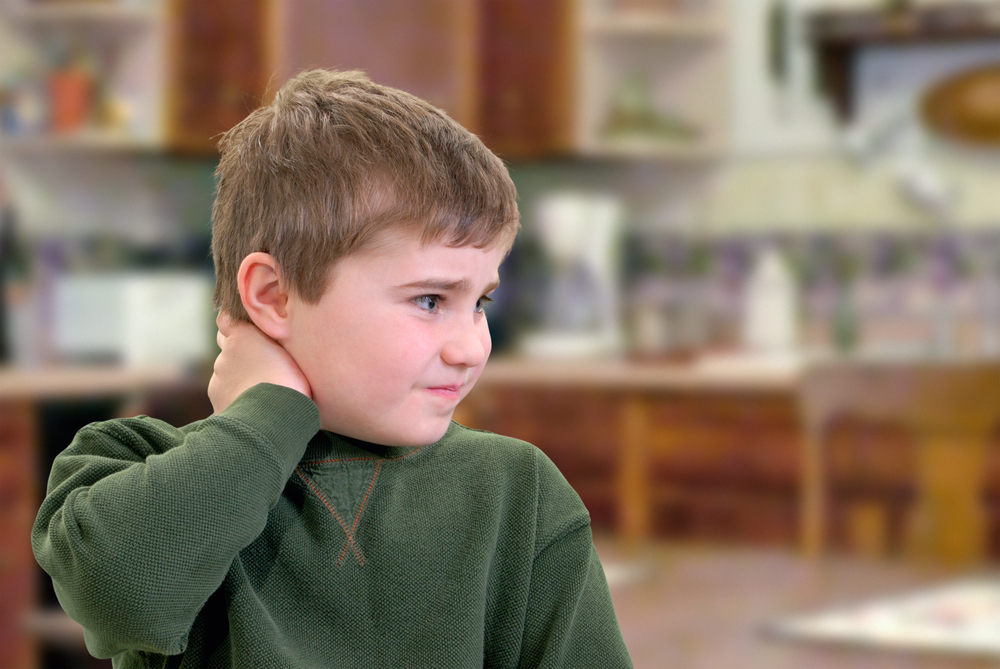Neck pain doesn’t just happen to adults. While children are resilient, even their necks can fall prey to a variety of conditions that can leave them in discomfort. Neck pain in children can be due to their activities, posture or other factors. A recent survey of schoolchildren in Finland shows that students experience neck pain at least once a week. Understanding the underlying cause is important so it can be quickly and effectively managed, and understanding the potential causes of neck pain in children can keep you aware of what to look out for and keep your little one feeling their best.
Common causes of neck pain in children
Children can be a source of boundless energy that keeps them going through a variety of activities. It can also lead them to be susceptible to the occasional neck pain. Common causes of neck pain in children can include:
- Poor posture — Children today are children of technology. They can spend hours using electronic devices. They can go for temporary comfort without regard for proper posture. They may use improper desk ergonomics and slouch at desks or while watching TV. Poor posture can lead to straining their neck muscles, which can lead to discomfort and pain.
- Muscle strain — Children are active and carry backpacks to and from school. Participating in sports and carrying heavy backpacks leads to straining their neck muscles due to overexertion or improper use of neck muscles.
- “Text neck” — Diving back into the world of technology that surrounds today’s children, they can fall victim to text neck. Text neck can be caused by continuously looking down at screens, straining neck muscles and causing neck pain and stiffness.
- Stress and emotional factors — Stress and other emotional distress aren’t reserved just for adults. Academic stress, peer relationship pressure or family issues can weigh heavily on children. Stress and emotional tension can have physical manifestations, including neck pain.
- Trauma or injury — Active children can be prone to falls, accidents or injuries in contact sports. Trauma to the neck area can cause pain and discomfort.
- Growing pains — Growing pains can be a common complaint in children. As their bodies grow, muscles and ligaments may experience temporary pain. This can include neck pain.
- Underlying medical conditions — Neck pain in children can be a symptom of an underlying medical attention. Children can be susceptible to infections, inflammations and other structural issues that require medical attention.
Identifying signs of neck pain in children
Early intervention can be crucial in helping neck pain in children. The following signs can be indicators that your child is in pain:
- Verbal complaints.
- Limited range of motion.
- Changes in behavior.
- Guarding the neck.
Preventive measures for neck pain in children
It’s important to help ensure your child’s well-being and comfort, especially when it comes to helping prevent neck pain. Children are often immersed in their academic tasks, extracurricular activities and the ever-growing digital world. These are essential for their development but can also contribute to neck pain. Ways to help prevent neck pain can include:
- Promote good posture — Educate your child on the importance of having good posture while doing various activities. You can help them learn how to set up their desks, chairs and electronic devices ergonomically.
- Limit screen time — This prevention tip can seem like a punishment for digitally connected kids, but it’s important to set age-appropriate screen time limits. Encouraging breaks to stop and stretch during prolonged device use can also be beneficial.
- Balance backpack weight — This prevention method may be difficult, but it’s important. Backpacks should not exceed a certain percentage of a child’s body weight. This can be challenging in schools that are ditching lockers and having students carry everything in their backpacks from class to class. Encourage your child to use both shoulder straps to help distribute weight evenly and leave any unnecessary items at home.
- Regular physical activity — While children can be incredibly active, the digital world can also be tempting to stay indoors. Participating in a mix of activities, including stretching and strengthening exercises, can help keep children active and improve their overall musculoskeletal health.
- Stress management — Encourage open discussions about emotions and concerns. This can help equip children with effective stress management techniques to help prevent physical manifestations of tension in their neck muscles.
Care strategies for managing neck pain in children
Most cases of neck pain in children can be cared for at home with conservative measures. Strategies can include:
- Heat therapy — Using a heating pad or warm compress can help relax tense muscles.
- Physical therapy — Physical therapy can use manual therapy techniques to help release muscle tension and improve joint function. Exercise programs can help address specific needs to improve muscle strength and promote flexibility.
- Proper pillow support — A supportive pillow can help align the child’s head and spine. This helps improve their sleeping position for more restful sleep. Restful sleep allows their bodies time to reset and heal.
SSOR can help nurture neck health in your child
At SSOR, we understand that determining the cause of neck pain in children is the first step in helping them find relief and improve their overall well-being. Our dedicated team of physical therapists is dedicated to supporting children’s musculoskeletal health by supporting parents and providing effective treatment solutions. Together, we can help ensure that children thrive and can have a better life, free from the limitations of neck pain.
Call us or request an appointment today to prioritize your child’s health from neck pain.

